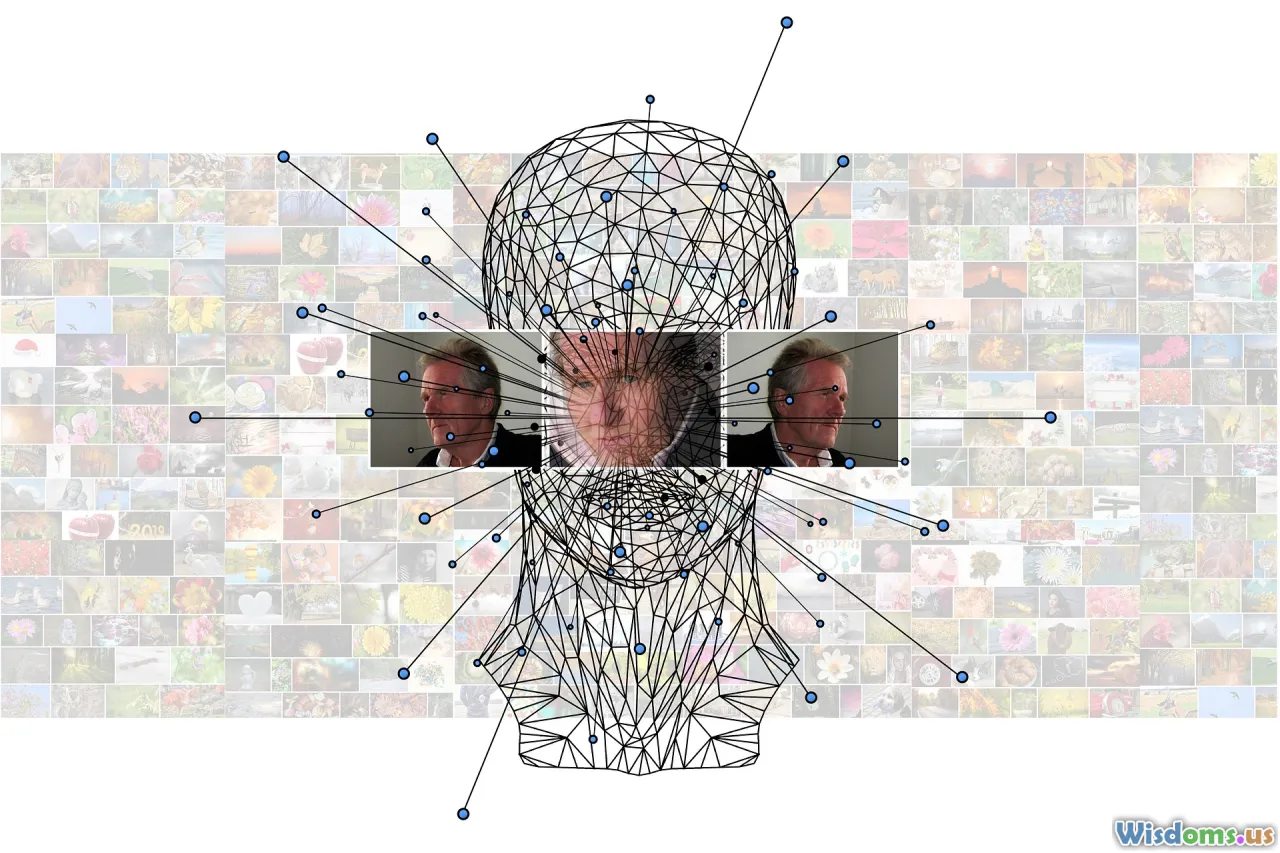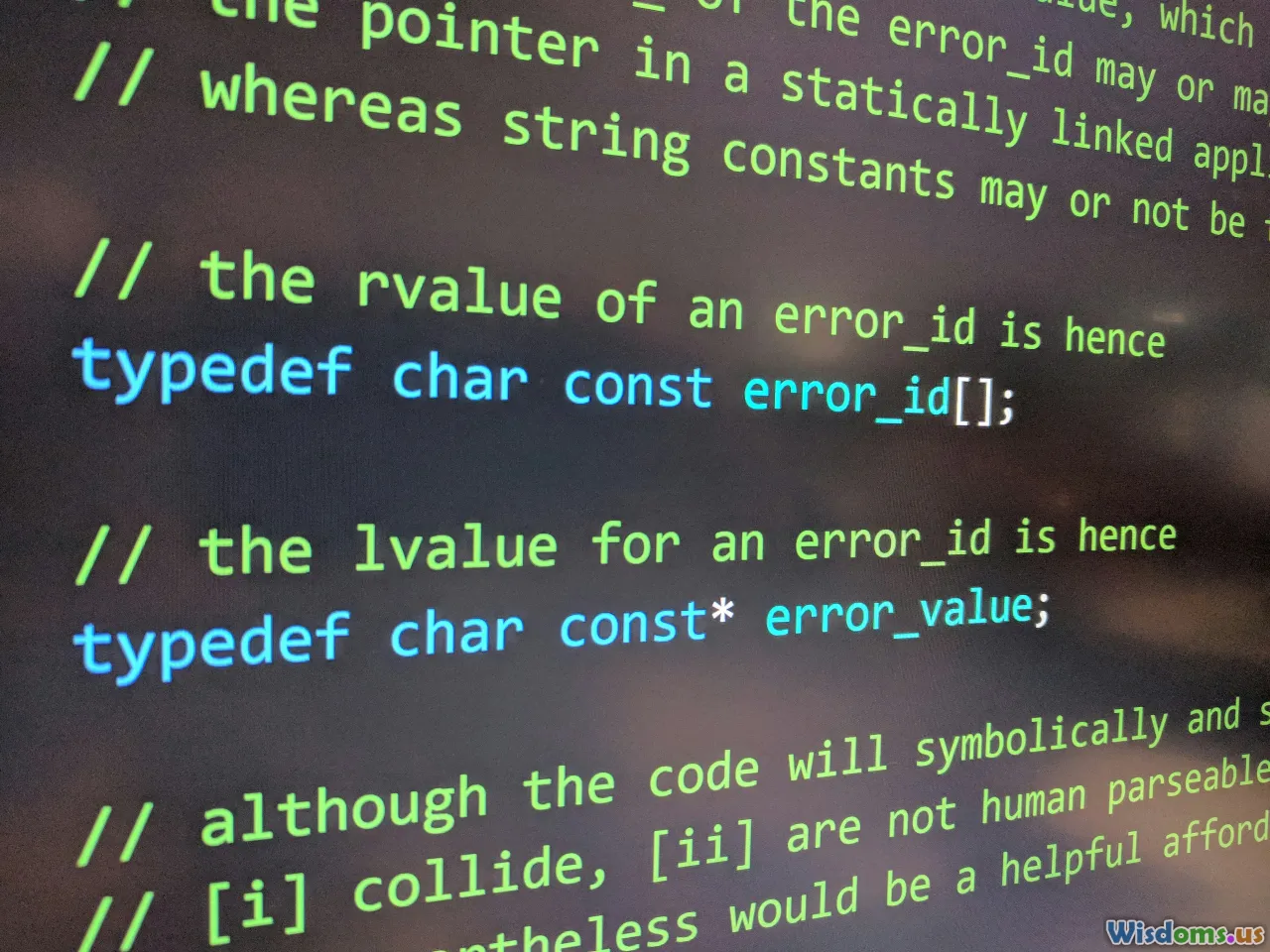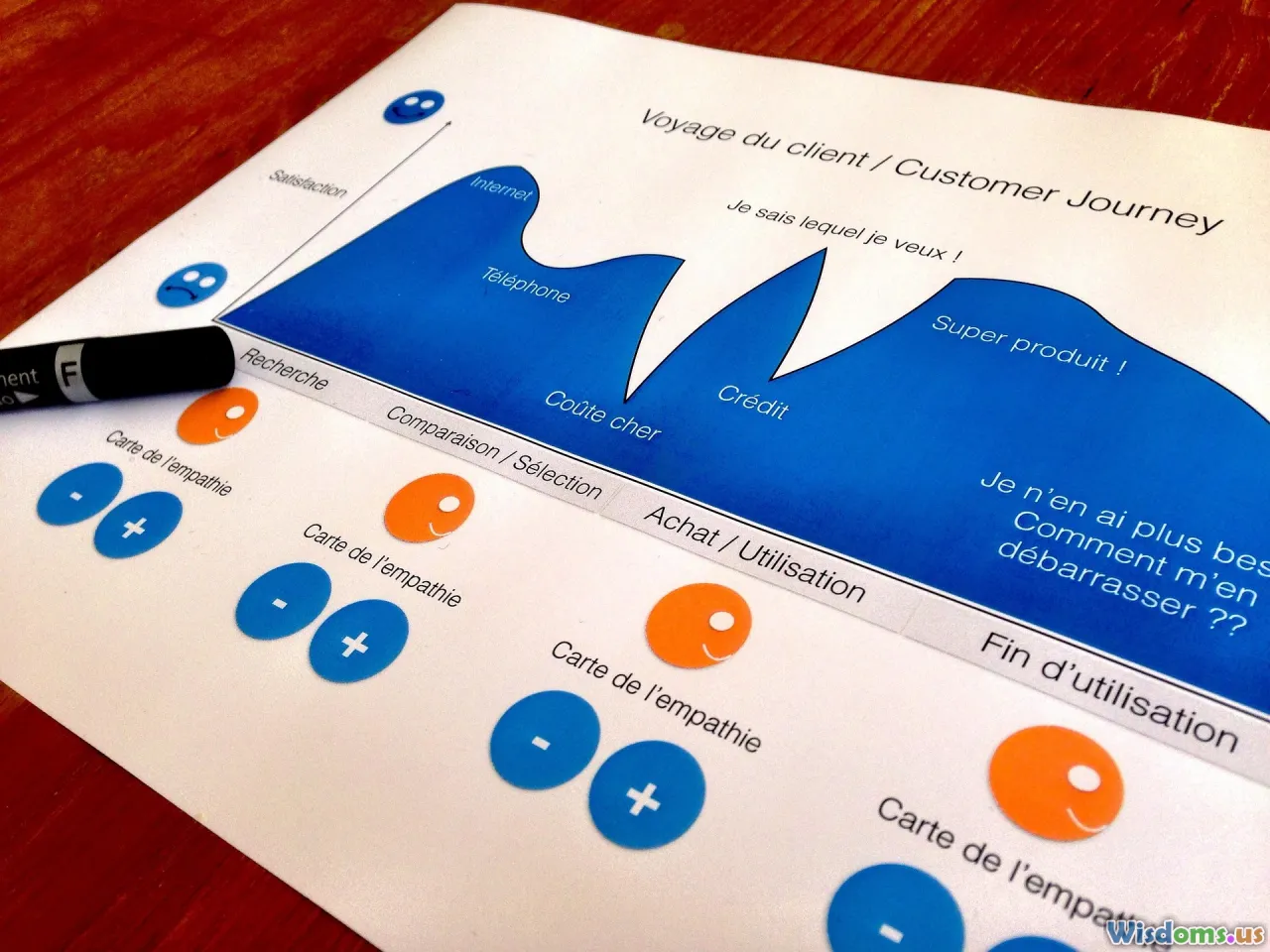
StepbyStep Guide to AI Powered Customer Segmentation
19 min read Learn how to implement AI-powered customer segmentation with a practical, step-by-step approach for actionable insights and smarter marketing strategies. (0 Reviews)
Step-by-Step Guide to AI-Powered Customer Segmentation
In today's dynamic marketplace, businesses are rethinking how they engage customers. The vast swell of digital data offers unprecedented opportunities for companies to intelligently segment their customer base—not just by age or location, but by behaviors, preferences, and lifetime value. Traditional segmentation falls short in this hyper-personalized era. That's where artificial intelligence steps in, automating deep, actionable insights at scale.
From global retailers to niche e-commerce startups, leveraging AI has enabled businesses to break the mold of one-size-fits-all strategies. Let's walk through a comprehensive, hands-on guide to building an AI-driven customer segmentation process, with concrete examples and proven methods every step of the way.
Defining Customer Segmentation in the Age of AI

Customer segmentation is about grouping your customers based on shared traits. Traditionally, age, gender, and geography dominated this process; today, advanced techniques reveal motivation, intent, and value. What's different with AI? Instead of static buckets, AI surfaces hidden patterns, discovering segments that are more dynamic and predictive.
Real-World Example: After deploying an AI-powered segmentation model, UK-based clothing retailer ASOS discovered a lucrative cluster of fast-fashion “micro-influencers”—previously invisible in demographic-only groupings. These individuals swayed peer purchases and responded well to targeted offers, leading to measurable uplifts in repeat sales.
A few of the segmentation dimensions AI excels in:
- Behavioral (purchase frequency, browsing patterns).
- Psychographic (values, attitudes).
- Predictive (likelihood to churn, lifetime value).
- Contextual (buying occasions, device usage patterns).
Laying the Foundation: Gathering & Cleaning Customer Data

It all starts with data. The more robust and clean your data, the sharper your clusters will be. Begin by aggregating customer touchpoints from every available source: CRM records, point-of-sale transactions, website analytics, social interactions, and even third-party sources where GDPR/CCPA compliance permits.
Pro Tips and Steps:
- Identify Your Data Sources: List out where customer interaction occurs—email, point-of-sale, social media, web activity, mobile apps, and support tickets.
- Example: Airbnb pulls hosts’ and guests’ interactions from both booking platform and in-app messaging.
- Standardize Your Data: Align different systems' output so 'first name' or 'city' means exactly the same everywhere.
- Avoid mismatches and duplicates by using unique customer IDs across platforms.
- Address Data Quality Issues: Use automated scripts or data cleanup tools to fix or remove incomplete, incorrect, or duplicate entries.
- Airlines are notorious for duplicate profiles when booking and loyalty systems aren’t synced—AI needs clean, unified profiles!
Takeaway: The mantra 'garbage in, garbage out' is critical. Investment in rigorous data hygiene pays dividends throughout your segmentation journey.
Choosing the Right AI Approach: Supervised vs. Unsupervised Segmentation

Selecting the right AI model matters. There are two primary categories:
Supervised Learning
You provide the algorithm with labeled examples (e.g., churners vs. loyalists) and it learns to classify customers based on patterns.
- Best for: When you already know what groups you’re after (e.g., VIP vs. at-risk).
- Popular techniques: Decision trees, Random Forest, logistic regression.
Unsupervised Learning
You don’t predefine groups—instead, the algorithm naturally discovers groupings based on observed similarities.
- Best for: When your customer base is diverse and you want AI to reveal hidden segments.
- Popular techniques: K-means clustering, hierarchical clustering, DBSCAN.
Case Study: A multinational telecom provider used unsupervised clustering on usage data. Instead of segmenting customers by generic ‘youth’ and ‘family’ labels, they identified a segment of data-heavy gamers—leading to a new, highly profitable unlimited data plan.
Pro Tip: Try both. Run unsupervised clustering to discover natural segments. Then use supervised methods (with labeled outcomes) on those clusters to predict future behaviors or campaign responses.
Preparing Features That Matter: Feature Engineering for Segmentation

An AI model’s performance relies heavily on the quality of its features (the input data columns). Feature engineering is the art and science of defining which signals best describe your customers.
**Key Feature Types:
- Demographics:** Age, gender, location.
- Recency, Frequency, Monetary (RFM): How recently, how often, and how much a customer has spent.
- Customer Journey Touchpoints: Email open rates, products viewed, abandoned cart events.
- Psychographics: Interests, sentiment (possible via text analysis using NLP models on support chat transcripts).
Example: A streaming service noticed that genre preferences alone didn’t predict churn. By engineering features based on weekend viewing patterns, binge-watching intensity, and pause frequencies, their segmentation revealed a high-value group of "marathon viewers" who were susceptible to competitor poaching after certain in-app frustrations.
Actionable Steps:
- Brainstorm signals unique to your business. The special sauce in feature engineering is domain expertise: What behaviors distinguish a bargain-hunter from a premium customer in your business?
- Continuous Improvement. Treat feature selection as iterative; refresh as you gather new types of data or business models shift.
Applying Clustering Algorithms: From Data to Segments

With data prepped and features chosen, it’s time to let AI uncover segments. The most common technique is K-means clustering—but depending on data volume and nature, alternatives abound.
K-means Clustering—How It Works:
- The algorithm groups your data points (customers) so each group (cluster) is internally similar but different from others.
- You choose a value K (the number of clusters).
- The algorithm iterates, assigning each customer to the nearest group mean, adjusting groupings each round until stability.
Tips for Practical Usage:
- Choice of K: Run the algorithm with several K values; plot the resulting inertia (“elbow method”) to see where improvement plateaus.
- Preprocessing: Scale your data features for optimal clustering—values like purchase amount (0–10,000) can overshadow binary indicators (0 or 1).
Advanced Alternatives: DBSCAN (for data with outliers), hierarchical clustering (for nested segment relationships), or Gaussian Mixture Models (to capture overlapping clusters).
Visualization Insight: Visualizing your clusters via principal component analysis (PCA) or t-SNE makes group differences tangible—crucial for stakeholder buy-in.
Interpreting and Profiling Your New Segments

Creating segments is only half the battle. Real-world business value is extracted by profiling each segment—you’ll want richly detailed, human-readable “personas” ready for action.
How to Profile Segments:
- Behavioral Trends: What actions define each segment (e.g., high online engagement, frequent returns)?
- Demographics/Psychographics: Dominant age range, location, buying motivations.
- Commercial Value: Compare segments by average order value, retention rates, and campaign response.
Example Table:
| Segment Name | Key Behaviors | Commercial Value | Recommended Action |
|---|---|---|---|
| Weekend Warriors | Buys on Fridays, shops in bursts | High repeat spend | Friday-only offers |
| Price Seekers | Heavy use of coupons | Low margin | Extra loyalty points |
| Premium Loyalists | Engages via app, refers friends | Highest CLV | VIP perks programme |
Tools: Use BI dashboards (e.g., Power BI, Tableau) to create interactive profiles for stakeholders to explore.
From Insights to Action: Activating Segments Across the Customer Journey

Effective customer segmentation is about more than insight—it's about real impact on business outcomes. AI-powered segments allow for precision in execution:
Personalizing Marketing Campaigns
Tailor messaging, offers, and product recommendations for each group. For instance, sending back-in-stock updates only to “last-minute buyers” or targeting a “premium loyalist” group with exclusive beta access.
Case Study: Netflix employs segmented recommendations—after clustering users by nuanced taste, it pushes series trailers that align with each group’s interests, far outperforming generic approaches.
Product Development
Analyze which segments feature unmet needs. A SaaS firm discovered through AI clustering that a substantial group of beginners struggled with onboarding—prompting an investment in onboarding UX that halved churn in that cohort.
Retention and Customer Service
Proactively target at-risk segments with retention campaigns, or use profiles to guide service reps. AI-based segmentation allowed a telecom to identify the high LTV customers most likely to leave, triggering personalized win-back calls at just the right moment.
Strategic Resource Allocation
Focus R&D spend or direct sales teams to pursue the most promising segments instead of spreading efforts thinly across your entire base.
Pro Tip: Maintain feedback loops. As your business evolves and new data flows in, re-segment and re-profile to keep your strategies relevant.
Measuring Impact and Fine-Tuning Your Segmentation
AI-driven segmentation isn't set-it-and-forget-it. Ongoing measurement and optimization ensure that your clusters continue to deliver business value.
Key Performance Metrics:
- Engagement Rates: Are tailored campaigns outperforming generic ones?
- Conversion & Retention: Is customer lifetime value improving in target segments?
- Churn Rates: Are at-risk customers in specific segments being retained more effectively?
- Net Promoter Score (NPS): Has customer satisfaction increased within VIP or pain-point cohorts?
Optimization Strategies:
- A/B Testing: Different treatment arms for each segment drive treasures of learning. Experiment with channel, timing, content, and offers.
- Segment Drift Analysis: Monitor how clusters change over time. Are new segments emerging as your business grows or as market conditions shift?
- Refresh Cycle: Schedule segmentation reviews quarterly or biannually for maximum relevance, especially post-launch of new products or services.
Illustrative Example: A B2B software provider tracked post-segmentation NPS surveys for six months. Their top two segments—"consultative buyers" and "self-service power-users"—both saw double-digit increases in satisfaction scores after adjusting onboarding and training tailored to each profile.
Best Practices & Pitfalls to Avoid in AI-Powered Customer Segmentation

Harnessing AI for customer segmentation brings transformative potential, but there are common hazards and expert moves to keep top-of-mind.
Best Practices
- Cross-functional Collaboration: Engage marketing, CX, product, and data teams from inception through rollout. Domain expertise shapes meaningful features and actionable outcomes.
- Ethical Data Use: Ensure compliance with privacy regulations—obtain proper consent for data use and be transparent with customers about how you use their information.
- Continuous Learning: Segmentation becomes dated—regularly retrain your AI and rediscover your customer base as data and market trends shift.
- Storytelling for Stakeholders: Package segment insights into compelling narratives for buy-in across the organization; dashboards help, but stories spark change.
Pitfalls to Dodge
- Overfitting to History: When AIs shape segments based only on past behaviors, surprises (like trending products or social shifts) get missed. Don’t ignore market context.
- Fixating on Obvious Features: Don’t assume that traditional demographics always matter most; behaviors, attitudes, and multi-channel journeys often trump age or gender.
- Analysis Paralysis: Too many micro-segments can paralyze action. Strike a balance—aim for clusters that are both distinctive and actionable.
- Ignoring Small but Mighty Segments: Sometimes niche clusters (like micro-influencers or super-users) pack disproportionate business impact if treated with focus.
Real-World ROI: Success Stories and Lessons Learned

Nothing inspires more than real results. Businesses across industries are reaping substantial benefits from AI-powered segmentation:
1. E-Commerce: After applying k-means segmentation, an online beauty retailer discovered a "gift-buyers" cluster who shopped only on holidays. Targeted seasonal offers to this group resulted in a 28% increase in holiday season revenue.
2. Banking: A European bank used AI-driven clustering to separate digital-native Millennial spenders from “advice-seekers.” This distinction enabled a digital-native mobile product launch with a tailored onboarding suite that cut early churn by 40%.
3. SaaS: Segmenting by early usage behavior allowed a SaaS provider to identify a "trial tinkerers" group—users prone to high initial activity but low conversion. A new onboarding sequence helped boost their free-to-paid upgrade rate by 18%.
Lessons? Segmentation is evolutionary: the greatest gains come to companies who listen, adapt, and apply AI's discoveries thoughtfully at every step of the customer journey.
The AI Segmentation Advantage: Future-Proofing Your Customer Strategy

As competition intensifies and customer demands grow, businesses can’t afford to treat every customer the same. AI-driven customer segmentation creates the foundation for hyper-personalized experiences, smarter resource allocation, and measurably higher returns.
Start with clean, comprehensive data. Invest in meaningful feature engineering. Apply the right AI for the job—and above all, let real customer needs guide your clustering and activation, not just the algorithms. As your data deepens and your company evolves, so too will your understanding of those who matter most: your customers.
Embracing AI-powered segmentation isn’t just about what’s possible today—but remaining adaptable, relevant, and thriving in the data-driven marketplace of tomorrow.
Rate the Post
User Reviews
Other posts in Artificial Intelligence
Popular Posts















